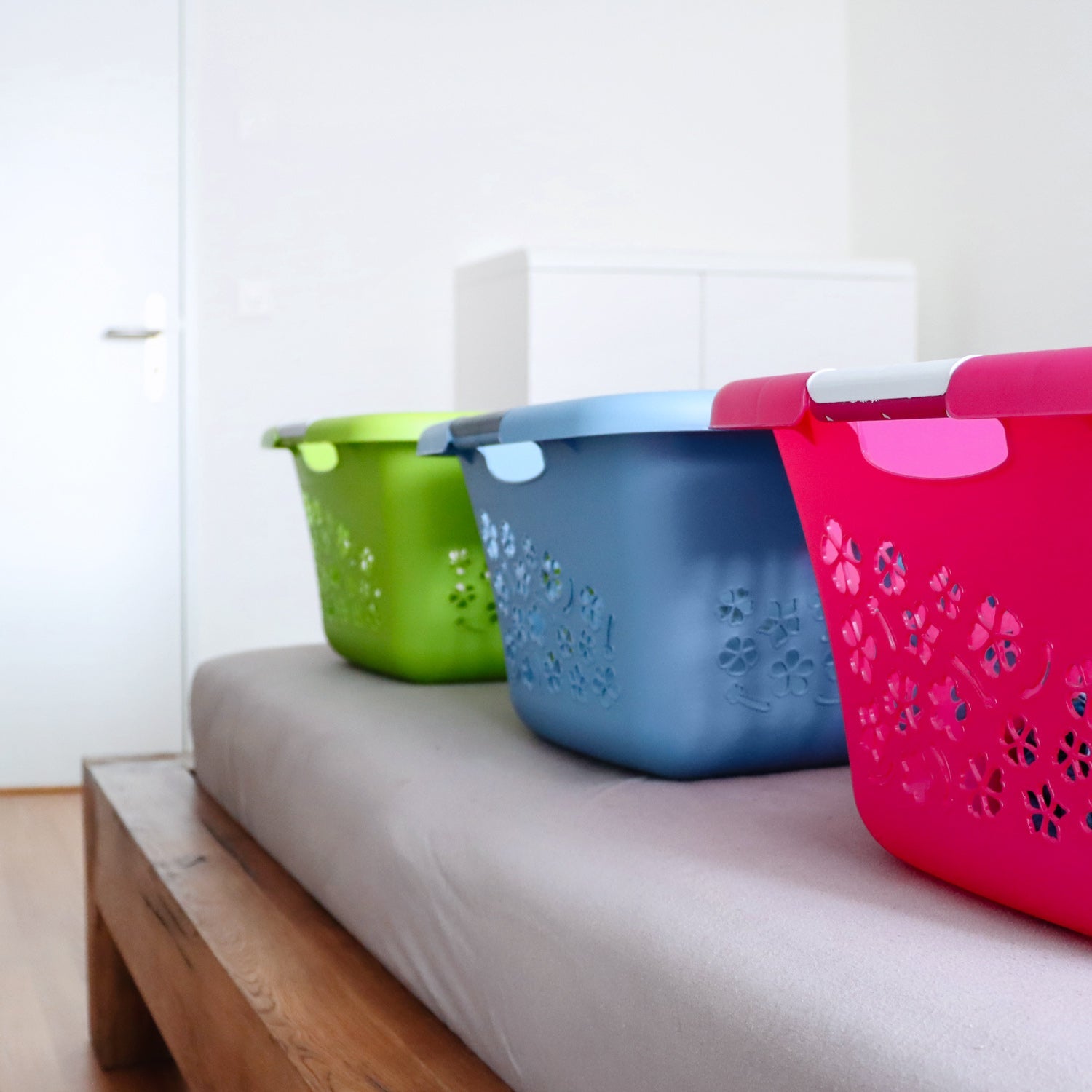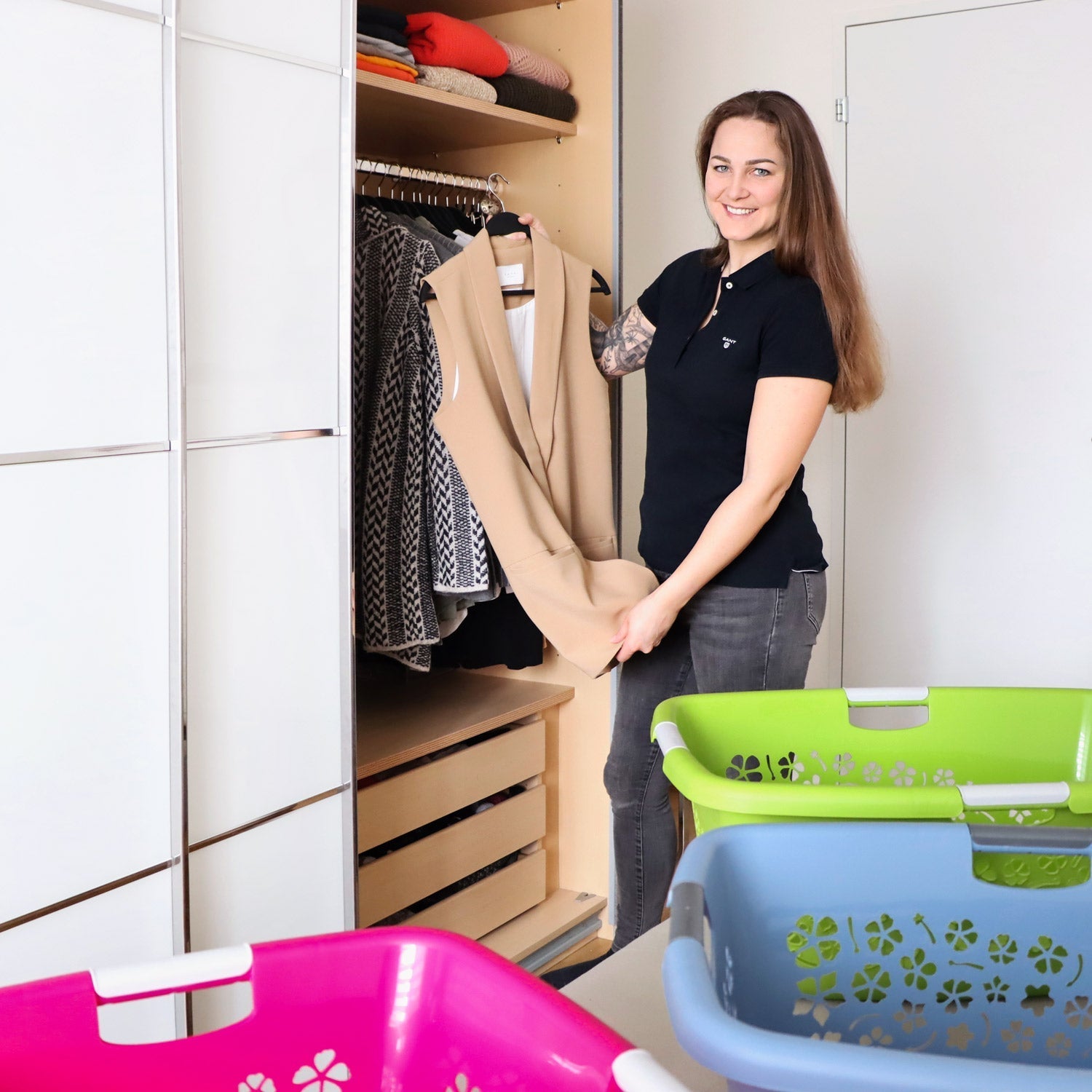Creating order made easy - with this system you can declutter your four walls.
Snowdrops and daisies sprout, crocuses and daffodils are not far away either. Spring is here - so it's time for spring cleaning. But before you can start, you have to clear out the house. The following tips will certainly make decluttering easier for you.
how to start
Actually, the beginning is quite “simple”. We like to use the following metaphor for this: How do you eat an elephant? – Exactly, piece by piece .
So if you want to start decluttering, you should do it like this – “one at a time”. Because doing too much is usually counterproductive for motivation.
Step 1:
First, decide in which room you want to start. In this room you look for a or or areas in which you want to start.
Step 2:
Now prepare 3 boxes:
- Keep
- Maybe (if you are still unsure whether to keep or pass it on)
- Throw away/sell/give away
Step 3:
Take your time and clean out the entire area that you have set out to clean. Sort content into categories. For example, if you have your closet in front of you:
- Jackets
- Long-sleeved tops
- Tops short-sleeved
- Pants
- Underwear, Socks & Pajamas
This step is important so that you can declutter sensibly. Because with this system you can see directly what you have surplus of. This should also make “separating” easier for you.
Step 4:
Now start distributing everything between the three boxes. “Keep” and “Throw away/sell/give away” will probably not be difficult for you. But what about "maybe"?
Now think about why these pieces ended up in the “maybe” box. Did you get it as a gift or did it cost a lot of money? These are often reasons why it is difficult to part with certain things.
Try going through the entire box of “ maybe ” again with the following questions to make a final decision:
- Why do I own this item?
- What is the meaning of this?
- When was the last time I needed the item?
- Do I still like this item at all?
- Would I buy the item again?
Step 5:
What is allowed to remain now has a permanent place.
Put back the things you want to keep, organized by category. To keep yourself from chaos, make a habit of putting things right back in their assigned place after use.
Where do I begin?
Start where you can achieve the most in the shortest amount of time - in other words, where success can be seen quickly. This will motivate you to keep going.
The wardrobe is suitable for this, for example. For the simple reason that clothes that are no longer beautiful or no longer suitable can be sorted out easily and without much thought. In addition, there are hardly any memorabilia in this area that are difficult to clean up.
Reduce your clothes by only keeping what you like and in which you feel beautiful and comfortable.
If you only have a little time, then take the bathroom cabinet, the medication or the living room furniture, for example. Make sure you finish what you start. Because unfinished work can lead to unnecessary stress and have a counterproductive effect on motivation.
When am I done?
You may be standing in the middle of your decluttering action full of energy and wondering when you will be done with it.
Well, you probably don't want to hear that right now – but still; You'll never really be done with it! We would also like to explain to you why this is the case. Maybe you're the type of person who will clean out, declutter and reorganize the house and then think: "That's it - done".
But… Today's consumer society has reached a current high that we can hardly escape. As a result, things accumulate in every household that we don't actually need and that we will sooner or later sell or dispose of. It doesn't always have to be your own negligence to blame. Consider that we are often given things that we do not like, that we may not need at all and therefore do not use.
So please don't doubt yourself when you've cleared out the whole house and half a year later find things that you don't really need anymore. This also does not mean that you were inconsistent with the last action. Because order is a continuous process that basically never ends. Because what is practical today does not have to be useful tomorrow.





